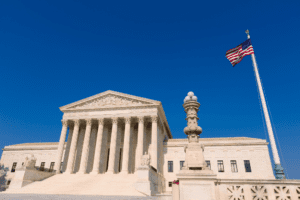 Justice Breyer continued: These 19th-century bans on concealed carriage were stricter than New York’s law, for they prohibited concealed carriage with at most limited exceptions, while New York permits concealed carriage with a lawfully obtained license. See supra, at 12. Moreover, as Heller recognized, and the Court acknowledges, “the majority of the 19th-century courts to consider the question held that these types of prohibitions on carrying concealed weapons were lawful under the Second Amendment or state analogues.” 554 U. S., at 626 (emphasis added); see also ante, at 44.
Justice Breyer continued: These 19th-century bans on concealed carriage were stricter than New York’s law, for they prohibited concealed carriage with at most limited exceptions, while New York permits concealed carriage with a lawfully obtained license. See supra, at 12. Moreover, as Heller recognized, and the Court acknowledges, “the majority of the 19th-century courts to consider the question held that these types of prohibitions on carrying concealed weapons were lawful under the Second Amendment or state analogues.” 554 U. S., at 626 (emphasis added); see also ante, at 44.
The Court discounts this history because, it says, courts in four Southern States suggested or held that a ban on concealed carriage was only lawful if open carriage or carriage of military pistols was allowed. Ante, at 44–46. (The Court also cites Bliss v. Commonwealth, 12 Ky. 90 (1822), which invalidated Kentucky’s concealed-carry prohibition as contrary to that State’s Second Amendment analogue. Id., at 90–93. Bliss was later overturned by constitutional amendment and was, as the Court appears to concede, an outlier. See Peruta v. County of San Diego, 824 F. 3d 919, 935–936 (CA9 2016); ante, at 45.)
Several of these decisions, however, emphasized States’ leeway to regulate firearms carriage as necessary “to protect the orderly and well-disposed citizens from the treacherous use of weapons not even designed for any purpose of public defence.” State v. Smith, 11 La. 633 (1856); see also Andrews v. State, 50 Tenn. 165, 179–180 (1871) (stating that “the right to keep” rifles, shotguns, muskets, and repeaters could not be “infringed or forbidden,” but “[t]heir use [may] be subordinated to such regulations and limitations as are or may be authorized by the law of the land, passed to subserve the general good, so as not to infringe the right secured and the necessary incidents to the exercise of such right”); State v. Reid, 1 Ala. 612, 616 (1840) (recognizing that the constitutional right to bear arms “necessarily . . . leave[s] with the Legislature the authority to adopt such regulations of police, as may be dictated by the safety of the people and the advancement of public morals”).
It is interesting that some states have historically permitted “open carriage” of firearms while prohibiting concealed carry. If “terrorizing the public” were a chief concern, it would make more sense to prohibit open carriage since the sight of armed individuals can cause terror whereas concealed firearms do not.
